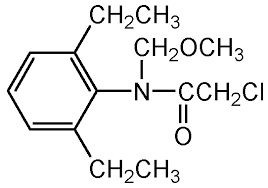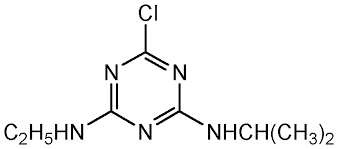
TRANSFORMING BASE SUBSTANCES INTO GOLD
Agrochemicals: Chemicals Used In Agriculture
Introduction
Agrochemicals are chemicals used in agriculture either to fertilize plants or to control insects, weeds or diseases. Most recently, experiments are being conducted on lacing the feed of cows with 3-NOP a chemical that inhibits methanogenesis, in an attempt to lower the carbon emissions of raising cattle. This is one new category of chemicals used in agriculture. We all know about fertilizers of which the elements N, P and K are a cornerstone. The other very important category used in agriculture are pesticides (kill pest insects), herbicides (kill pest plants) and fungicides which help treat plant disease. 50% of water pollution in the UK is from agriculture… The problem is massive in scale.
Definition
A pesticide is any substance used to kill, repel, or control certain forms of plant or animal life that are considered to be pests. The pests/problem may be insects, plant diseases, fungi, weeds, nematodes, snails, slugs, etc.
Pesticides include herbicides for destroying weeds and other unwanted vegetation, insecticides for controlling a wide variety of insects, fungicides used to prevent the growth of molds and mildew, disinfectants for preventing the spread of bacteria, and compounds used to control mice and rats as well as nematodes (nematicides).
Types of Insecticides
Insecticides vary in the numbers of different kinds of insects they kill.
Broad Spectrum
Some insecticides kill only a few kinds of insects. Sometimes you can choose these insecticides when you wish to kill only one insect pest and not other beneficial insects in the area. Many insecticides are general purpose or wide range killers. These “broad spectrum” pesticides are used when several different kinds of insects are a problem. One chemical can kill them all. No broad spectrum insecticide kills all insects; each varies as to the kinds of insects it controls.
Narrow Spectrum
While many insecticides are broad spectrum, killing a wide variety of animals by attacking a system common to all, such as the nervous system, a new group of insecticides are much more selective. The chitin inhibitors only affect animals with chitin in their exoskeleton (i.e. insects). Growth regulators are even more specific. They affect certain groups of species that have a particular hormone. Finally, pheromones are the most restrictive because they react with only one species or one sex of a single species.
Efficacy: Short Term vs. Residual
Insecticides also vary in how long they last as a killing agent. Some break down almost immediately into nontoxic by -products.
Nonselective herbicides:
These are toxic to all plants. These are often used when no plants are wanted in an area. For example, nonselective herbicides could be used for clearing under guardrails or for total control of weeds in industrial areas.
Selective herbicides
These kill some plants with little or no injury to other plants. Usually selective types will kill either broadleaved plants or grassy plants. These are useful for lawns, golf courses or in areas with desirable trees. Some very selective herbicides may kill only certain plants in a group; for example, crabgrass killers on lawns.
A plant growth regulator (or plant regulator) increases, decreases or changes normal growth or reproduction in a plant.
Agricultural Pollutants in Water
Common agricultural pesticides/herbicides indicators in contaminated water are alachlor, atrazine and simazine. They are used to control annual grasses and broadleaf weeds in many types of crops.

Alachlor Molecular Structure, an herbicide from the chloroacetanilide family

Atrazine Molecular Structure, an herbicide of the triazine class.

Simazine Molecular Structure, an herbicide of the triazine class.

The Chemical Structure of Glyphosate a.k.a Roundup ®
Impact on Water Quality
Agrochemicals, particularly pesticides and fertilizers, can significantly impact water quality by contaminating surface water and groundwater, leading to harmful effects on aquatic life, potential human health risks, and disruption of ecosystems due to their toxicity and ability to accumulate in the food chain; this can include impacts like algal blooms from excess nutrients, reduced biodiversity, and potential reproductive issues in aquatic organisms. Note that 50% of all water pollution in the UK comes from industrial agriculture. Also, fertilizers like N and P also impact water quality by causing algal blooms.
How to Remove them from Water
There is a variety of chemical, physical, and biological approaches for pesticide removal from water, such as:
advanced oxidation processes like Fenton’s Reagent,
Active Carbon adsorption,
activated sludge treatment, membrane bioreactors, and
membrane technologies such as RO.
Companies such as Arvia in the UK market Electrochemical Oxidation as a treatment solution. This kind of system uses expensive electrodes that generate strong oxidizing species such as the .OH radical.
Legislation
HSE and DEFRA are the national regulators in the UK for Pesticides and Agriculture, working on behalf of the UK government and the devolved administrations. The Plant Protection Products Regulations apply.
They aim to ensure that pesticides do not harm human health or have unacceptable effects on the environment by:
- enforcing the regulations
- ensuring only authorised products can be marketed
- ensuring products are used in a sustainable fashion
- monitoring the impact of the chemicals
A maximum residue level (MRL) is the maximum concentration of a pesticide residue in or on food or feed that is legally tolerated when a pesticide is applied correctly.
In Conclusion:
Agricultural biocides have a significant environmental impact on our water, insect biodiversity and bees. The best strategy to fight this source of pollution is not to use them at all and revert to decentralized organic agriculture.
Compiled by Rami E. Kremesti M.Sc., CSci, CEnv, CWEM
Contact us for more information.
Click on this link to read about the Science of Water Treatment Chemicals.
If you found this page useful, please leave us a positive review on Google.
Biography of the Author:

Rami Elias Kremesti Portrait
Rami Elias Kremesti is a chartered water and wastewater treatment specialist with a background in chemistry based out of the UK. He has worked on a myriad of water treatment and power station projects internationally. He is a British Citizen based out of High Wycombe, UK. He has published three books on philosophical topics which he loves to ponder in his spare time.